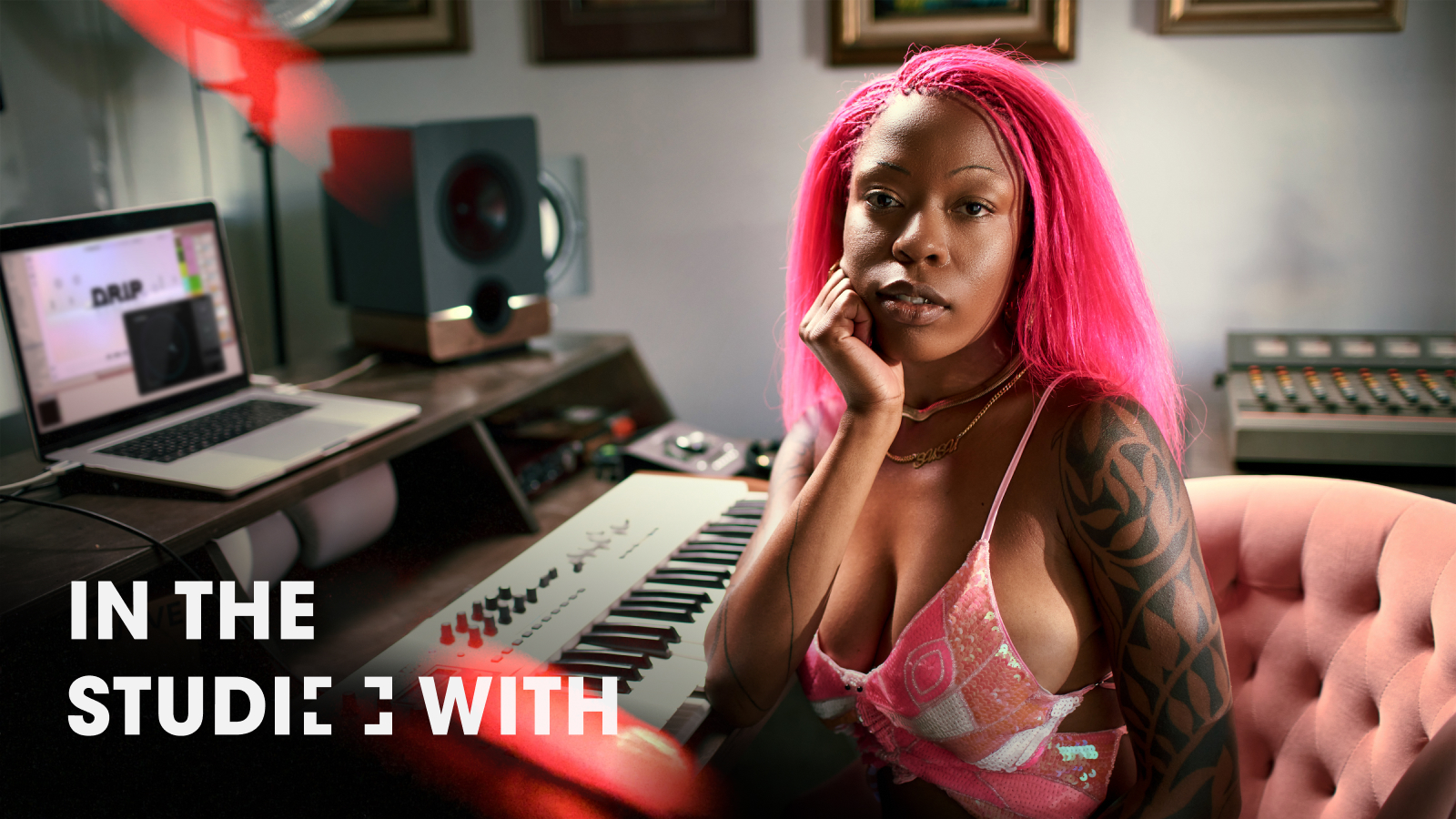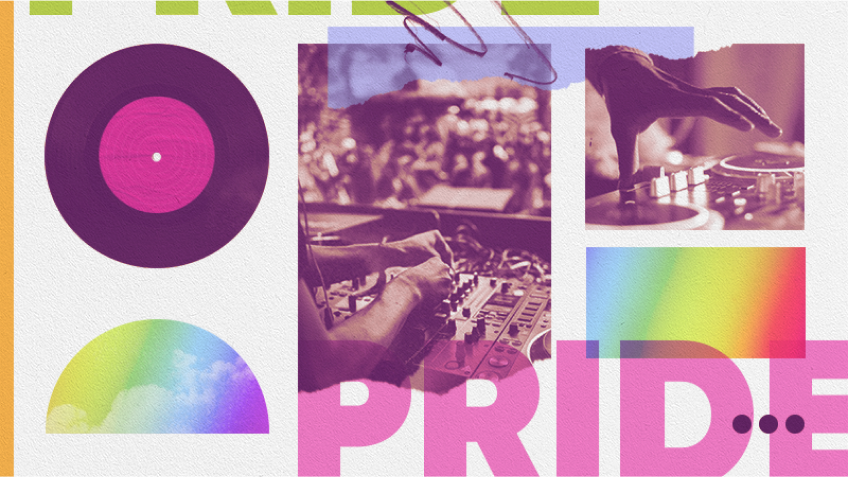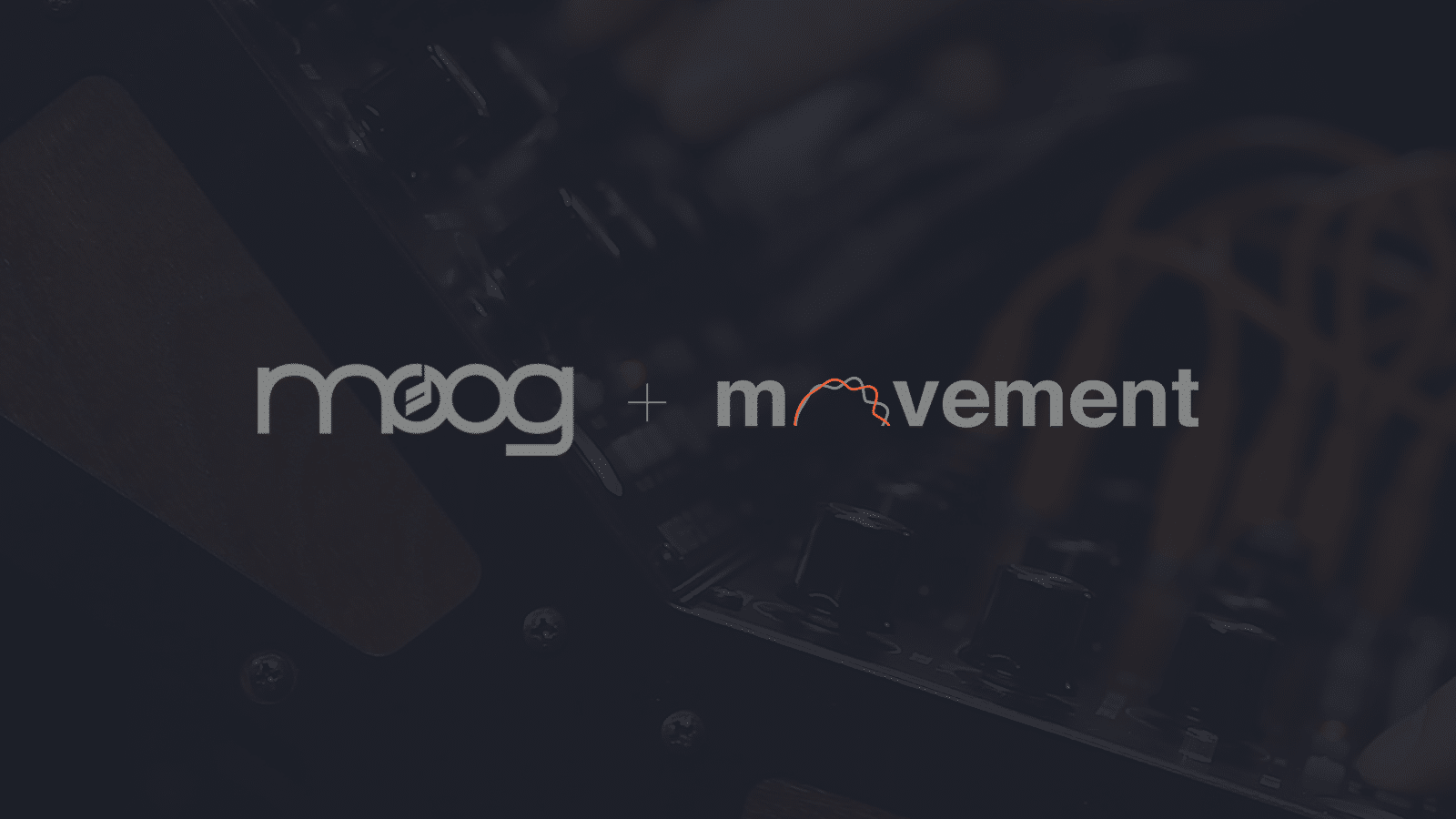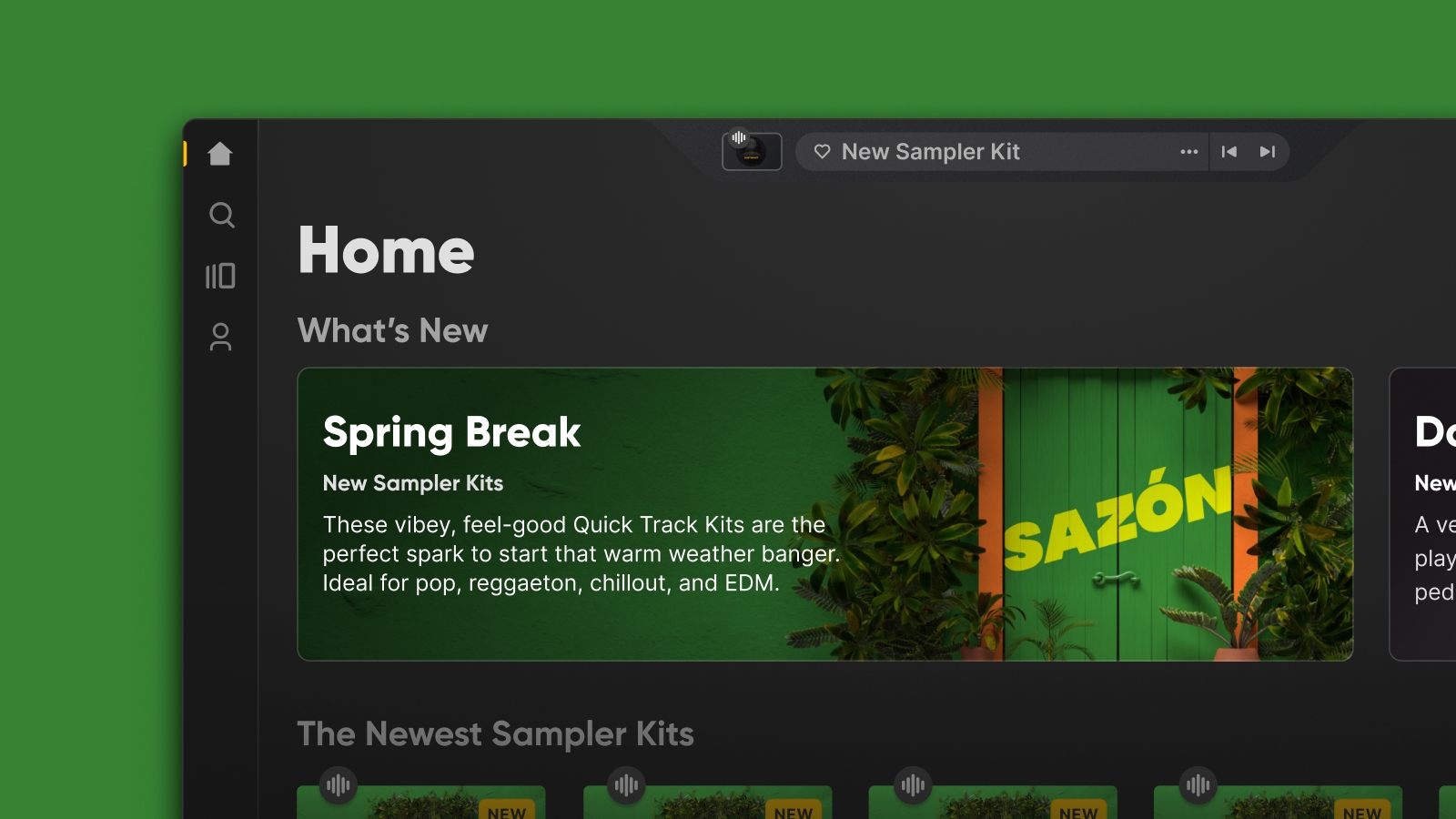Sudan Archives is the artist moniker of 27-year-old violinist and producer Brittney Parks. Ever since her emergence as part of the vaunted Stones Throw Records roster in 2017, Sudan has established herself as one of the most unique musical voices in the world. Her lush blend of string-led R&B and electronica is uniquely her own; it’s an accomplishment many artists aspire towards, but few can actually claim.
“If you’re an artist, you have to start from yourself,” she tells Output in her Los Angeles home. “I think especially for singers, they can get held back because they might feel like they can’t create because they’re not an instrumentalist or producer or engineer. Get in that thousand-dollar iPhone in your pocket and open up Voice Memos and record something.”
We spent the rest of the afternoon with Sudan to chat about her origin story as a young violinist, the minimalist magic of Francis Bebey, and how she first got into making music with an iPad.
Then, she takes us into the studio to show us how she uses Arcade and Portal by Output to create a jumping-off point for her intricate productions.
From Violin to VSTs
From an early age, “DIY” was more than just an aesthetic for Sudan — it was her primary musical ethos. Sudan first learned violin in her elementary school years, but it wasn’t until she started performing in church — where improvisation and playing by ear was a requirement — that she began to forge a deeper bond with the instrument.
Sudan considers her musical journey in two phases: Before and after her exposure to recording software and making music with technology. “Pre-tech, I was just a girl in church playing violin,” she says. “And then I basically moved to LA, started making beats on my iPad, and incorporated the iPad beats with the violin.”
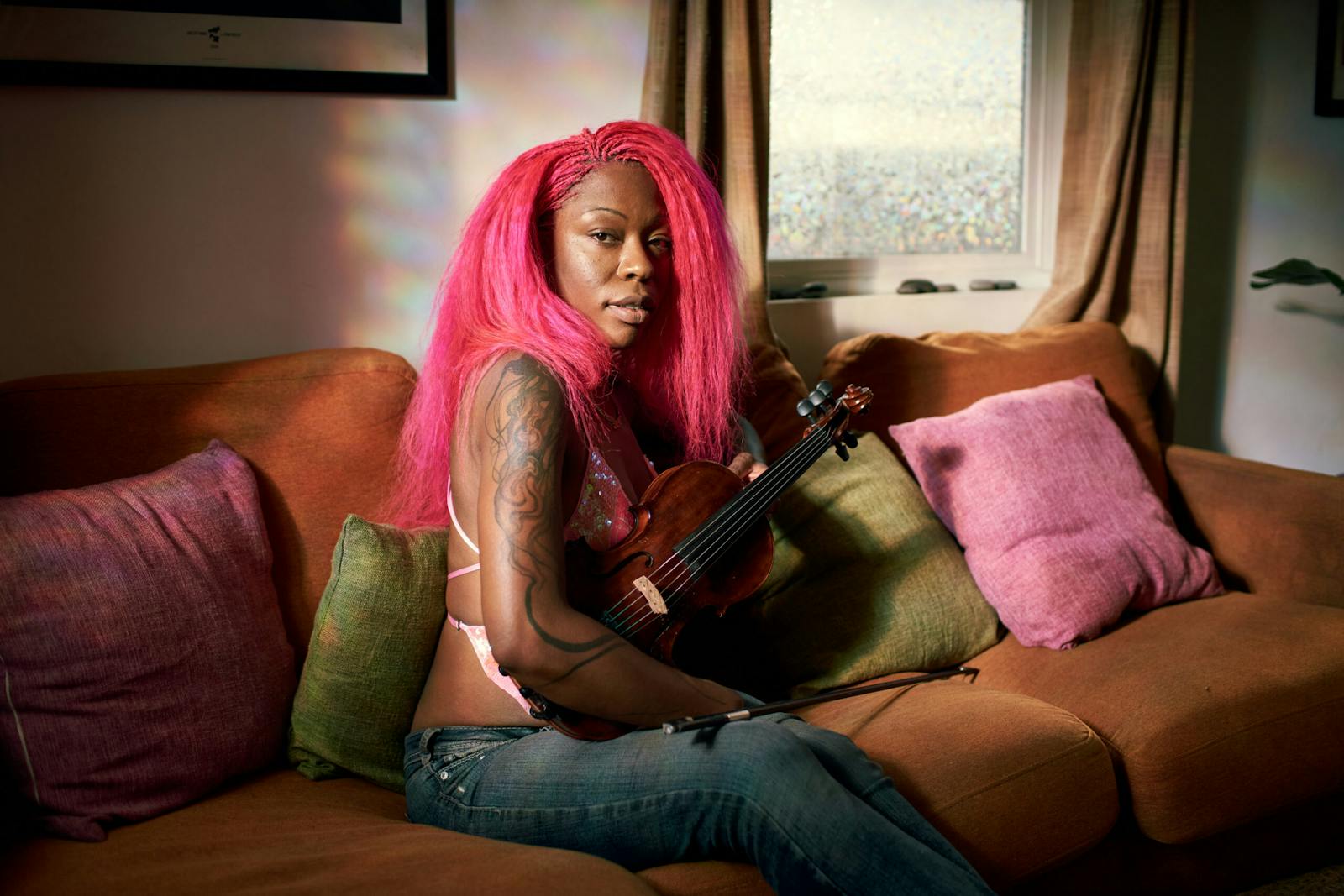
Without a network in Los Angeles, the self-described introvert started teaching herself music production online. “I was literally just in my bedroom on YouTube, trying to Google stuff, buying gear, blowing up gear, and recording the sound of it,” she remembers. “I realized that I don’t need to be in the studio with a bunch of random people.”
Armed with bountiful inspiration from Cameroonian artist Francis Bebey — a pioneer of electronic and contemporary African music — Sudan set about developing and identifying traits of her own artistry.
“With Bebey, it blew my mind because [his work] was my first experience with minimalism,” she recounts. “A lot of music these days is very dense, because why not use as many layers as you can when we have the technology? But I’d never heard music so simple, yet hypnotic, rhythmic, just calm, and funky at the same time.”
“Get in that thousand-dollar iPhone in your pocket and open up Voice Memos and record something.”
Sudan Archives
Time passed. Sudan eventually graduated from the iPad beat-making apps to Ableton Live, though her loop-based workflow remained the same. Attaching a pickup to her violin gave her access to an orchestra, a drum machine, and a bass guitar, all in one.
“I would tap these rhythms on the body, and loop that,” she says. “And then I’d add bowed layers, and plucks, and pitch the plucks really low on the looper, like a bass. So suddenly I’d have five instruments where there were none.”
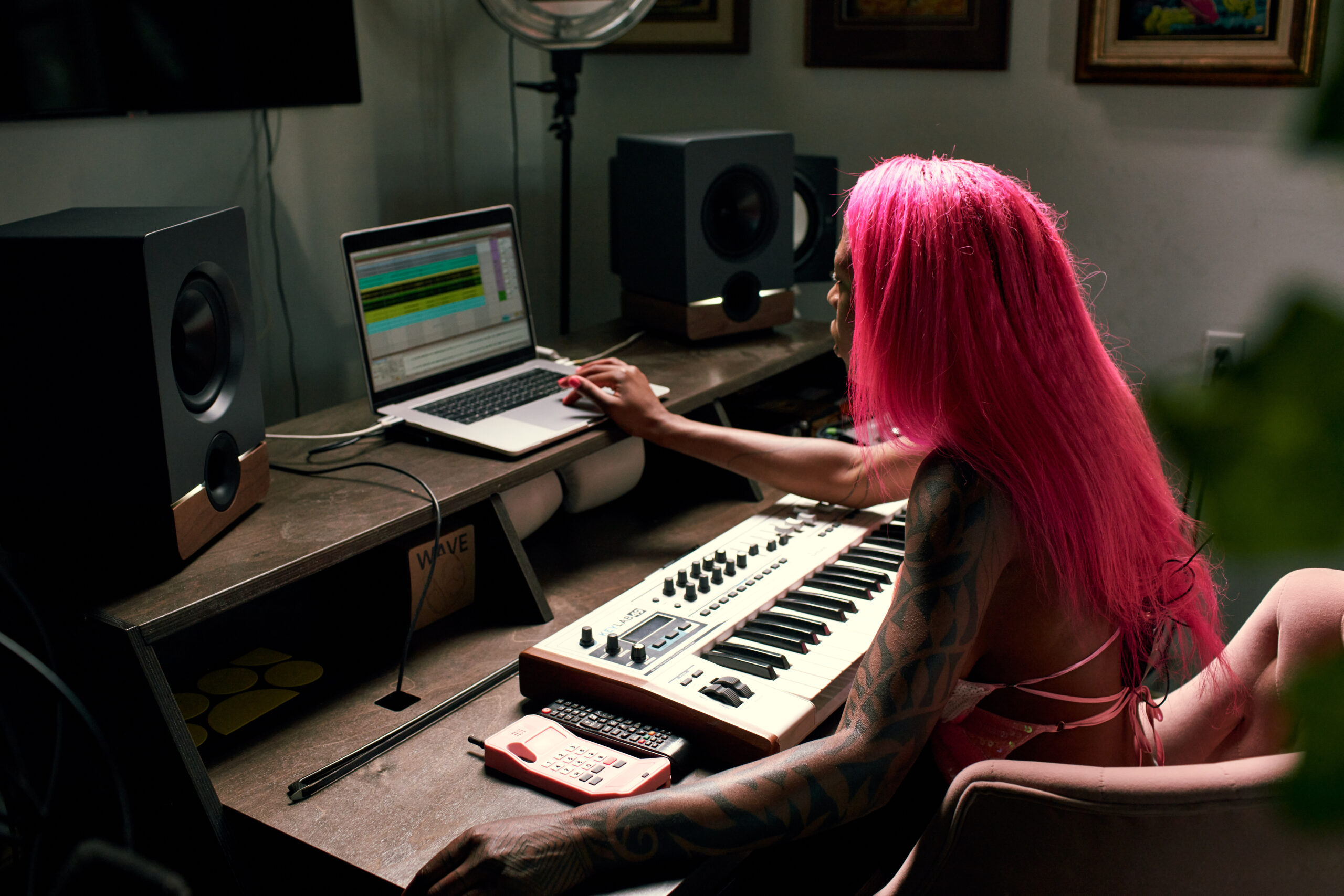
The Importance of Sauce
The centerpiece of Sudan’s home recording studio is her Output Platform studio desk. It’s got ample room for her 49-key MIDI keyboard and several other beat pad controllers. Sitting above the built-in rack space are the Frontier by Output studio monitors, developed in collaboration with Barefoot.
Sudan begins to demonstrate how she kept her BOSS RC-20 loop station workflow. Equipped with a special MIDI violin in her lap, she navigates to Ableton Live and opens up Arcade to lay down a woodwind loop (“Trippy Flutes,” in Drip) and a phrase of percussion (“Clunk and Clang,” from Beat Elements) in just a matter of minutes.
Though she once had reservations about her lack of formal violin training, the powerful drive to teach herself is arguably the reason she’s so adept in expanding the instrument beyond its original purpose.
“I was in orchestra for a year or two, but the culture can be intimidating because if you can’t get lessons, you might get categorized differently,” she says. “But my mom always told me to just keep playing by ear. Even though I lost all of the theory, and I don’t really know how to read music… I don’t think you really need to, as long as you got the sauce.”
“I don’t need to be in the studio with a bunch of random people.”
Sudan Archives
But what does that actually mean? Sudan shows us, swapping her MIDI violin for an electric one. She loops a new melody line, then a harmony, and then another one, each time feeling out the beginning of the note as she glides the bow across the strings. Music is instinctual — it’s felt as much as it is heard — and sitting in the studio with Sudan is an exhilarating experience.
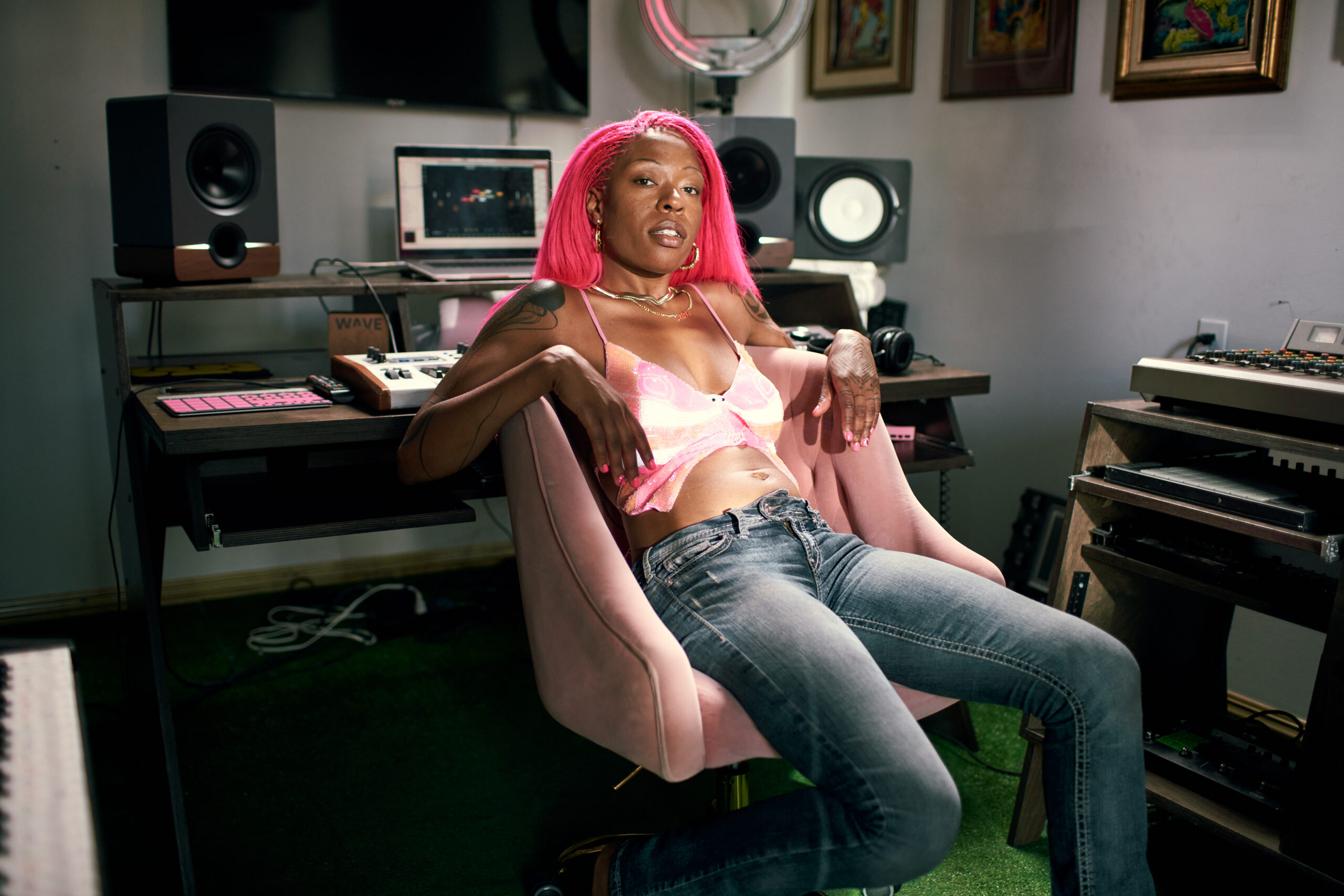
Regarding her new layers, Sudan throws them together in a group and adds Output’s granular engine Portal — “one of my favorite plugins” — and starts flicking through the hundreds of presets, eventually stopping on “Digital Tape Toys.”
“Ooh, that one’s really cool,” she muses, as her now alien-sounding string layers glitch and scatter across the stereo field. Another musical idea down, a million more to go.
Check out more: Watch Hudson Mohawke give a tour of his studio and break down how he makes hit songs with TNGHT.
